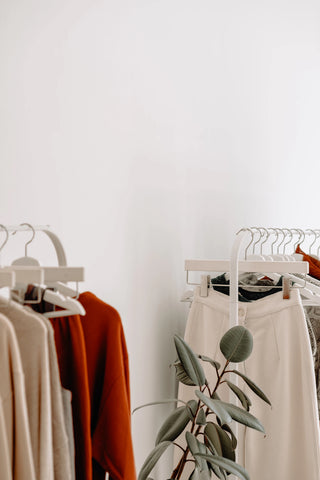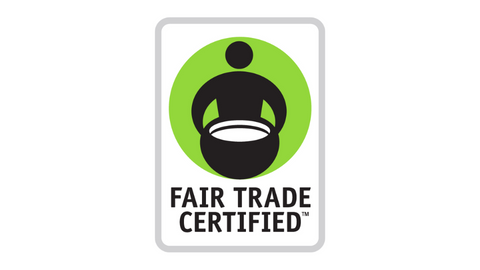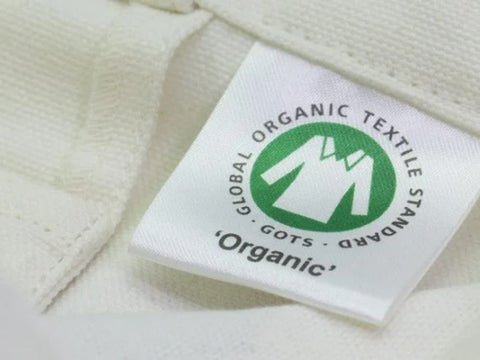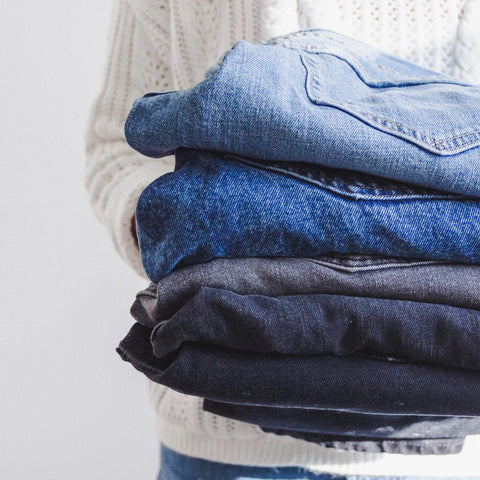Decoding “Green” Fashion Terms: How to Find Sustainable Fashion

The fashion industry has recently experienced a noteworthy shift towards greater sustainability, with both designers and consumers recognizing the importance of reducing fashion’s environmental footprint. This shift has given rise to various “green” terms, labels, and certifications – some are genuinely beneficial and legitimate, while others teeter on the edge of misleading.
If you’re passionate about the environment and mindful of what you wear, understanding these labels will help you differentiate authentic sustainability from mere marketing tactics. In this article, we’ll teach you how to decode these sustainability terms and offer tips for building a more eco-friendly, healthy wardrobe.
What is fashion sustainability?
The fashion industry is notorious for its negative environmental impacts, such as resource depletion, pollution, degradability, and exploitative labor practices. Sustainable fashion, on the other hand, focuses on creating clothing and accessories that reduce these impacts on society and the environment.
There are numerous approaches to fashion sustainability. Brands might focus on lessening water waste, minimizing pollution, emphasizing organic materials, promoting fair labor practices, and more.

While genuine sustainability considers the entire lifecycle of a product – from raw materials to disposal– most brands can’t afford to be 100% sustainable from start to finish. One brand might emphasize organic cotton, while another promotes fair trade. For customers who want sustainable, high-quality fashion, all the different sustainability goals can get confusing. On top of that, some companies are “greenwashing” their brands to seem sustainable when they’re not. (We’ll touch on this more below.)
Consignment: fashion sustainability made easy
Hundreds of thousands of women use consignment shopping to promote sustainable consumption. Shopping for pre-loved items minimizes the need for new manufacturing – which, in turn, reduces the waste materials, water, and chemicals. It also diverts textiles away from landfills and extends the lifecycle of clothing pieces.
Dig deeper into understanding fashion sustainability with the following resources:
- What is Sustainable Fashion?
- How Sustainable Fashion is Changing the World
- 7 Trends in Sustainable Fashion in 2023
8 common fashion sustainability terms
Understanding common terms associated with sustainability is a great first step in taking your wardrobe to the next level. While we provide definitions for each, note that some terms can be used interchangeably.
- “Eco-friendly” implies a product or practice is less harmful to the environment than conventional alternatives. However, this can sometimes be used a catch-all term and doesn’t always guarantee true sustainability.
- “Green” suggests a lower environmental impact than traditional fashion but can be too broad to really understand how the brand promotes sustainability.
- “Ethical” fashion considers social factors during production, emphasizing fair labor laws, human rights, and welfare.
- “Cruelty-free” refers to those companies that do not harm animals while producing their products. They don’t test their products on animals and don’t use animal-based materials.
- “Organic” fashion signifies materials produced without synthetic pesticides, herbicides, or genetically modified organisms. Organic farming is considered healthier (for people and the environment) due to its reduced chemical use compared to traditional agriculture.
- “Upcycled” reduces waste by transforming existing materials or garments into new products. Learn how to revamp your closet and minimize your own waste here.
- “Recycled” fashion uses materials made from pre-existing items, which helps divert waste from landfills. The difference between upcycled and recycled is that upcycling transforms waste in its current state, while recycling breaks down the waste to manufacture something entirely new.
- “Biodegradable” materials decompose naturally, reducing the environmental impact when disposed of. This helps address the damaging impact of textile waste.

5 key fashion labels and certifications
Federal and private companies have established labels and certifications to help consumers make informed purchasing choices. Below are some of the most notable and common denotations you’ll see in fashion.
Fair Trade Certified
This certification ensures the product meets fair labor standards and supports workers’ rights at every step of the supply chain. When a product is Fair Trade Certified, you can feel confident the product was made under safe working conditions, environmental protection, and sustainable livelihoods. Look for this certification if you want to encourage greater equality and workers’ rights in the fashion industry.

Global Organic Textile Standard (GOTS)
GOTS certification ensures all textiles are made from organic materials without the use of toxic, persistent pesticides or synthetic fertilizers. GOTS-certified products also must meet specific environmental and social criteria throughout production. Look for this certification if you want to fill your home with natural, organic materials.

OEKO-TEX Standard 100
The OEKO-TEX Standard 100 label demonstrates that the textiles and materials have been tested for harmful substances – both regulated and non-regulated substances – and are harmless for human health. This is an excellent certification to seek when buying anything that will touch your body, such as clothes, bedding, and more.

Cradle to Cradle (C2C)
The C2C certification promotes the concept of closed-loop products, aka those that can be safely returned to nature or industry at the end of their life. This process assesses products based on their environmental impact and recyclability in terms of material health, product circularity, social fairness, water and soil stewardship, and clean air and climate protection. Buy C2C-certified products if you want to help minimize the overall waste of the fashion industry.

Sustainable Apparel Coalition (SAC)
The SAC developed the Higg Index, a tool that measures the environmental and social performance of brands’ supply chains. Higg has become one of the apparel industry’s leading environmental and social assessments by measuring the entire value chain from start to finish. If something is rated well on the Higg Index, it’s highly sustainable – both environmentally and socially – from start to finish.

How to avoid greenwashing
“Greenwashing” is when brands falsely claim to be sustainable for marketing purposes – while not actuallyadhering to these principles in practice.
Brands aren’t usually downright lying, though. Rather, their marketing uses psychological tricks to make consumers think they’re more sustainable than they are. For example, a company might have a green leaf logo to make it feel earthy and natural, even if they don’t have any sustainability certifications.

To avoid falling into the greenwashing trap, research brands and look for evidence that aligns with their claimed values. Check for the certifications and labels mentioned earlier, and seek transparency about the supply chain, materials, and production processes.
Brands that are truly sustainable aren’t going to hide it. Sustainability is a competitive advantage, so they’ll happily give information on their website about their sustainability.
Learn more about what greenwashing is and how to avoid it here.
How to choose truly sustainable fashion
Consumers have the power to influence the fashion industry with their purchasing decisions. If everyone bands together to create a more sustainable industry, fashion brands will be forced to sit up and take notice.
Here are some tips to get started making more sustainable fashion choices:
- Choose quality over quantity. Invest in well-made, timeless pieces that will last years in your closet.
- Check certifications. When buying new clothes, check for recognized sustainable certifications.
- Opt for local or independent brands. Support local or small fashion retailers who prioritize sustainability and transparency. Stay away from fast fashion box stores, which are notorious for their poor social and environmental practices.
- Repair or upcycle your clothes. Rather than throwing out old clothes, extend their life by repairing or upcycling them. Learn how to revamp your clothes here.

Our biggest fashion sustainability tip is to buy second-hand pieces. Consignment stores like Current Boutique have become an integral part of the sustainable fashion landscape:
- Long product life: Consignment stores extend the lifespan of pre-owned pieces, reducing the need for new production and minimizing waste.
- Quality and diversity: Consignment stores carry a wide range of quality, designer items. This means you can find unique, quality pieces you’ll keep in your closet for years to come (as opposed to fast fashion trends you’ll throw out by next season).
- Budget-friendly: Sustainable fashion brands are often at a higher price point due to the use of quality materials and ethical labor practices. But consignment stores are sustainable and budget-friendly, offering designer pieces at a fraction of their original cost. This makes sustainability more accessible, a critical factor in changing the fashion landscape permanently.
- Supports local: Many consignment stores operate locally. When you shop from a consignment store, you support your local economy and helping to foster a sense of community.
Learn more about how Current Boutique promotes fashion, fun, and sustainability here.
Hello, sustainability!
Understanding sustainability terminology can help you make informed fashion choices. As consumers, we hold the key to a more sustainable future where style and ethics go hand-in-hand.
Consignment shopping is the perfect first step if you want to make more sustainable choices. Do your part for sustainable fashion and start shopping for pre-loved designer pieces now!
Photo Sources:
- https://unsplash.com/@anotherlovely
- https://unsplash.com/@thombradley
- https://www.fairtradecertified.org
- https://www.sustainablejungle.com/certifications/what-is-gots-certified/
- https://www.oeko-tex.com/en/news/blog/what-oeko-tex-labels-mean-and-why-they-matter
- https://www.textiletoday.com.bd/ca-launches-first-ever-c2c-certified-gold-denim-garment/
- https://apparelcoalition.org/tools-programs/higg-index-tools/
- https://unsplash.com/@sarahdorweiler
- https://unsplash.com/@maudefl








